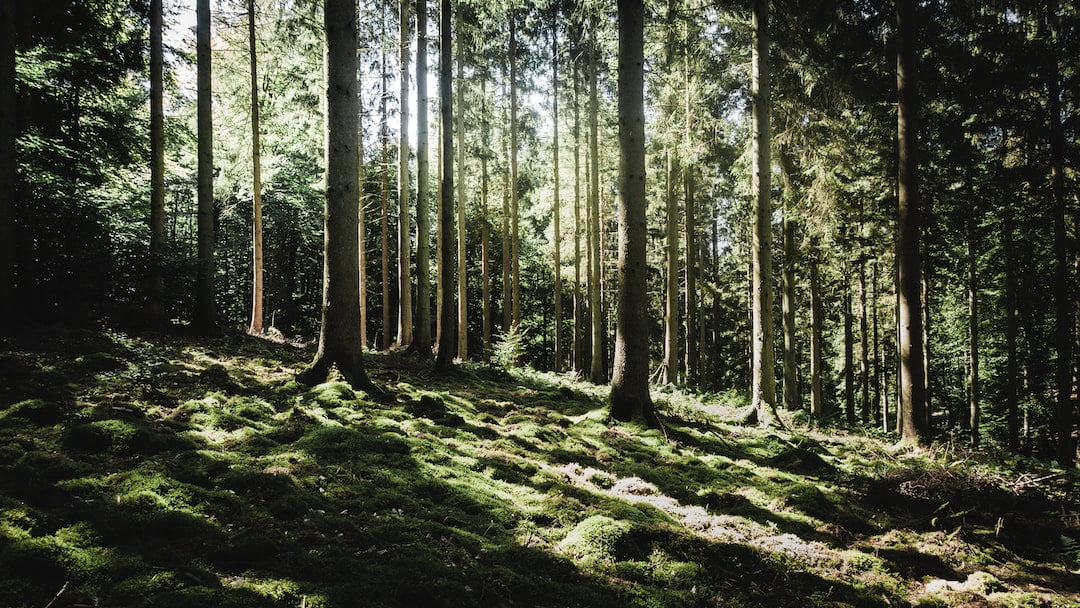Do you ever wonder how tall cedar trees can grow? Well, you’re in luck! In this article, we will explore the impressive height potential of cedar trees and the factors that influence their growth.
Cedar trees, known for their majestic beauty and strength, come in various types, each with its own unique characteristics. From the towering Western Red Cedar to the graceful Eastern Red Cedar, these trees can reach astonishing heights under the right conditions.
Factors like soil quality, sunlight exposure, and climate play a crucial role in determining their height. We will also discuss the average height of cedar trees, the tallest cedar tree ever recorded, and the rate at which they grow.
Additionally, we’ll provide valuable tips on pruning and maintenance techniques to ensure these magnificent trees reach their maximum height safely.
So, if you’re interested in learning more about cedar trees and their impressive growth potential, keep reading!
Quick Summary
- Cedar trees can reach heights of 20 to 70 feet, depending on the type.
- The average height of cedar trees is 40 to 70 feet, with some reaching 90 feet or more.
- The tallest recorded cedar tree is 379 feet tall, with a trunk diameter of 17.5 feet.
- Cedar trees can grow at a rate of 2-3 feet per year.
Types of Cedar Trees
So, you’re probably wondering about the different types of cedar trees and how they can vary in height. Well, let me tell you, there are several types of cedar trees out there, and each one has its own unique characteristics.
Some of the most common types of cedar trees include the Eastern Red Cedar, the Western Red Cedar, and the Atlantic White Cedar.
Now, when it comes to height, cedar trees can range anywhere from 20 to 70 feet tall, depending on the type. The Eastern Red Cedar, for example, can grow up to 40 feet tall, while the Western Red Cedar can reach heights of up to 70 feet. As for the Atlantic White Cedar, it tends to be on the shorter side, usually growing to about 20 to 40 feet tall.
However, it’s important to note that the height of cedar trees can also be affected by external factors such as the type of soil they’re planted in, the amount of sunlight they receive, and even cedar tree diseases.
So, if you’re looking to grow cedar trees in your backyard, make sure to choose the right type for your area and take proper care to prevent any diseases that may affect their growth.
Stay informed and enjoy the beauty of these amazing trees!
Factors Affecting Height Growth
In order to understand the factors affecting the height growth of cedar trees, it’s important to consider the climate and environment in which they’re growing. The weather patterns, temperature, and amount of rainfall can all have a significant impact on their growth.
Additionally, the soil conditions play a crucial role. Cedar trees thrive in well-drained soil with a good nutrient content.
Lastly, genetics also play a key role in determining the height growth of cedar trees. Different species and varieties have varying growth patterns.
Climate and Environment
Cedar trees, known for their majestic height, thrive in a variety of climates and environments. However, climate change can have a significant impact on cedar tree growth. As temperatures rise and weather patterns become more erratic, cedar trees may struggle to adapt.
Extreme heat can cause water stress, leading to stunted growth and even death. Additionally, increased drought conditions can limit water availability, further hindering their growth. On the other hand, excessive rainfall can also be detrimental, causing root rot and weakening the tree’s overall health.
Climate change can also result in more frequent and severe storms, which can cause physical damage to cedar trees. Therefore, it is crucial to consider the changing climate and its potential effects when cultivating and preserving cedar trees.
Soil Conditions
Thriving in diverse environments, the majestic cedars are highly susceptible to the changing soil conditions, leaving their survival hanging by a thread. The soil composition plays a crucial role in the growth and development of cedar trees. The right balance of nutrients, moisture, and pH level is essential for their root development. Cedar trees prefer well-draining soil that is rich in organic matter, such as loamy or sandy soil. This type of soil allows the roots to penetrate deeply and establish a strong foundation, ensuring stability and safety for the tree. On the other hand, soil that is compacted or lacks proper drainage can hinder root growth and lead to waterlogged conditions, which can be detrimental to the tree’s health. It is vital to maintain the right soil conditions to ensure the survival and growth of these magnificent trees.
| Soil Composition | Root Development | |
|---|---|---|
| Well-draining soil rich in organic matter (loamy or sandy) | Strong and deep root system | |
| Compacted soil or poor drainage | Hindered root growth, waterlogged conditions | … which can lead to stunted or weakened growth of the trees. |
Genetics
Imagine the awe-inspiring beauty of these majestic giants, standing tall and strong, as their genetic makeup allows them to adapt and thrive in various environments. Cedar trees possess a remarkable genetic diversity that enables them to grow to impressive heights.
Through tree breeding, scientists have been able to harness this genetic diversity to create new varieties of cedar trees that are even more resilient and adaptable. By carefully selecting and crossbreeding trees with desirable traits, such as fast growth and disease resistance, researchers have been able to enhance the overall health and longevity of cedar trees.
This genetic diversity not only ensures the survival of cedar trees in different soil conditions but also contributes to maintaining the overall health of our forests. So, rest assured that these magnificent cedar trees will continue to flourish and provide us with their beauty and benefits for generations to come.
Average Height of Cedar Trees
You’ll be amazed by the average height of cedar trees. These majestic giants can reach towering heights that will leave you in awe.
On average, cedar trees can grow to be around 40 to 70 feet tall. However, there have been some cedar trees recorded to grow as tall as 90 feet or even more! It’s truly incredible to think about the sheer size and grandeur of these magnificent trees.
When it comes to safety, it’s important to keep in mind that cedar trees can pose a potential risk due to their height. If you have cedar trees on your property or are planning to be around them, it’s crucial to take precautions to ensure your safety.
Make sure to stay a safe distance away from the trees, especially during strong winds or storms when branches may break or the tree may become unstable. It’s always a good idea to consult with a professional arborist for advice on how to properly care for and maintain cedar trees to prevent any potential hazards.
The average height of cedar trees is around 40 to 70 feet, with some reaching heights of 90 feet or more. While these trees are awe-inspiring, it’s important to prioritize safety when dealing with them. Remember to take necessary precautions and seek professional guidance to ensure your well-being around these magnificent giants.
Tallest Cedar Tree on Record
Standing proudly as a testament to nature’s extraordinary power, the tallest recorded cedar tree soars to breathtaking heights, leaving all who behold it in a state of awe and wonder. This majestic giant is recognized as the tallest tree in the world, towering above all others with its awe-inspiring height.
To give you an idea of the incredible stature of this cedar tree, here are five mind-blowing facts about it:
- Its height reaches an astonishing 379 feet, equivalent to a 40-story building.
- The tree’s trunk measures a remarkable 17.5 feet in diameter, making it wider than most cars.
- The branches spread out like a colossal umbrella, providing shade over an area larger than a tennis court.
- Its age is estimated to be over 1,000 years, standing as a living testament to the endurance of nature.
- The cedar tree belongs to the species known as Western Red Cedar, which is prevalent in the Pacific Northwest.
While this extraordinary specimen holds the title for the tallest tree in the world, it’s worth noting that the cedar species boasts other impressive representatives in North America. These majestic giants, although not quite reaching the same heights, still stand tall and proud, offering a glimpse into nature’s magnificent creations.
Growth Rate of Cedar Trees
As you explore the fascinating world of majestic cedar trees, it’s intriguing to discover the remarkable rate at which these natural wonders flourish. Cedar trees are known for their impressive growth rate, and understanding this process can help us appreciate their incredible vitality.
Growth rate analysis shows that cedar trees can grow an average of 2-3 feet per year, depending on various factors such as soil conditions, sunlight exposure, and available water. However, it’s important to consider the potential impact of climate change on their growth.
Climate change can have a significant effect on the growth rate of cedar trees. Rising temperatures and changes in precipitation patterns can alter the conditions necessary for their optimal growth. While cedar trees are adaptable, extreme weather events such as droughts or heavy rain can negatively impact their growth. Additionally, increased levels of carbon dioxide in the atmosphere can affect the overall health of cedar trees and hinder their growth potential.
To ensure the safety and well-being of cedar trees, it is crucial to monitor the impact of climate change and take necessary measures to mitigate its effects. This includes implementing sustainable land management practices, conserving water resources, and promoting reforestation efforts. By protecting the environment and preserving the habitat of cedar trees, we can ensure their continued growth and contribute to the overall health of our planet.
Pruning and Maintenance for Maximum Height
Now that you understand the growth rate of cedar trees, let’s talk about pruning and maintenance techniques to ensure your tree reaches its maximum height safely.
Pruning plays a crucial role in maintaining the health and structure of your cedar tree. By removing dead or diseased branches, you prevent potential hazards and promote new growth. Start by inspecting the tree regularly and identify any problem areas. Use clean, sharp pruning tools to make precise cuts just above the branch collar. Remember to never remove more than 25% of the tree’s foliage in one pruning session as it can stress the tree. Additionally, consider hiring a professional arborist for larger pruning jobs to guarantee safe and proper techniques.
Tree care is equally important for maximizing the height of your cedar tree. Ensure your tree receives adequate water, especially during dry periods. Apply a layer of mulch around the base to retain moisture and protect the roots. Regularly fertilize the tree with a balanced slow-release fertilizer to provide it with essential nutrients. Lastly, protect your cedar tree from pests and diseases by monitoring for any signs of infestation and promptly taking action.
By following these pruning techniques and providing proper tree care, you can help your cedar tree grow to its full potential while keeping safety in mind.
Cultural and Symbolic Significance of Cedar Trees
In this section, we’ll explore the cultural and symbolic significance of cedar trees. You’ll learn about their role in mythology and religion, as well as the traditional uses of cedar wood.
Additionally, we’ll discuss how cedar is often seen as a symbol of strength and resilience.
Cedar in Mythology and Religion
Cedar trees, with their towering presence, have long been revered in mythology and religion. These majestic trees are often associated with mythical creatures and hold deep symbolism in different cultures.
In Greek mythology, cedar trees were believed to be the dwelling place of the gods and were associated with immortality and protection.
In ancient Mesopotamia, the cedar tree was seen as a symbol of power and divine authority, often used in religious rituals and ceremonies.
The ancient Egyptians also held cedar trees in high regard, using their wood for building temples and coffins.
In various Native American tribes, cedar trees symbolize strength, healing, and protection. The cedar’s strong and resilient nature is often seen as a source of safety and security, making it a significant part of mythological and religious beliefs.
Traditional Uses of Cedar Wood
You can feel the warmth and aroma of cedar wood as you run your fingers along its smooth surface, imagining the countless traditional uses it has served throughout history.
Cedar wood has been used for centuries in traditional crafts, offering both beauty and durability. It’s commonly used in the construction of furniture, as its natural oils make it resistant to rot and insect damage.
Cedar wood is also highly valued for its aromatic properties, which can help deter pests and create a calming environment. Additionally, cedar oil production is a popular industry, as the oil is known for its medicinal and therapeutic properties.
It’s used in aromatherapy, skincare products, and even as a natural insect repellent. So, whether you’re crafting a piece of furniture or enjoying the benefits of cedar oil, this versatile wood has played a significant role in traditional practices.
Cedar as a Symbol of Strength and Resilience
Imagine yourself standing among a dense forest, where the mighty cedar stands tall, symbolizing strength and resilience. The cedar tree holds a deep symbolic meaning and cultural importance, representing qualities that we often aspire to possess.
Here are four reasons why the cedar is a powerful symbol of strength and resilience:
-
Stability: The cedar’s strong and sturdy trunk provides a sense of safety and security, standing firm against the elements.
-
Durability: This remarkable tree can withstand harsh weather conditions, symbolizing the ability to overcome adversity and bounce back stronger.
-
Longevity: Cedar trees have an impressive lifespan, symbolizing the timeless nature of strength and resilience.
-
Healing properties: Cedar wood has been used for centuries in various cultures for its healing properties, representing the ability to heal and rejuvenate.
In a world that desires safety, the cedar tree’s symbolic meaning and cultural importance remind us of our own inner strength and resilience.
Conservation and Protection of Cedar Trees
Take a moment to appreciate the majestic heights that cedar trees can reach and the importance of conserving and protecting these incredible natural wonders. Cedar trees are not only breathtakingly beautiful, but they also play a crucial role in our ecosystem. Conservation efforts are essential to ensure the survival of these magnificent trees for future generations.
Cedar trees face numerous threats that require our attention. Deforestation, climate change, and invasive pests pose significant risks to their existence. By actively participating in conservation efforts, we can help protect cedar trees and the habitats they provide for countless species. Planting cedar seedlings, supporting local conservation organizations, and advocating for sustainable logging practices are just a few ways we can contribute to their preservation.
Conserving cedar trees is not only about protecting their physical presence but also about safeguarding the benefits they offer. These trees play a vital role in maintaining soil stability, preventing erosion, and improving water quality. They also provide shade, habitat, and food for countless animals and insects. By preserving cedar trees, we are ensuring the safety and well-being of our environment and the creatures that depend on them.
Let’s join forces to conserve and protect cedar trees. By recognizing the threats they face and taking action, we can guarantee their survival for generations to come. Together, we can preserve the beauty, strength, and resilience of these incredible natural wonders.
Frequently Asked Questions
Are cedar trees only found in specific regions of the world?
Cedar trees are found in various regions worldwide due to their adaptability to different habitats. They have evolved specific adaptations to survive in these regions, ensuring their safety and ability to thrive.
How long does it typically take for a cedar tree to reach its maximum height?
To ensure optimal growth of cedar trees, factors affecting their growth rate include proper watering, sunlight exposure, and soil conditions. It typically takes several years for cedar trees to reach their maximum height.
Can cedar trees be grown in urban environments?
Yes, cedar trees can be grown in urban environments. They are great for urban gardening due to their environmental benefits like improving air quality and providing shade.
Are there any specific diseases or pests that commonly affect cedar trees?
Cedar tree pests and diseases can pose a threat to the health of your trees. Common pests include cedar bark beetles and bagworms, while diseases like cedar apple rust and cedar rust can cause damage. Stay vigilant and take preventive measures to protect your cedar trees.
What are some common uses for cedar wood?
Cedar wood has many common uses, such as furniture, decking, and siding. It is prized for its natural beauty, durability, and resistance to rot and insects, making it a safe choice for construction projects.
Conclusion
In conclusion, cedar trees can grow to impressive heights. Depending on the type and environmental factors, cedar trees can reach an average height of about 40 to 70 feet. However, the tallest cedar tree on record soared to a staggering height of over 200 feet.
To ensure maximum height growth, proper pruning and maintenance techniques should be implemented. Cedar trees hold great cultural and symbolic significance, and efforts should be made to conserve and protect these majestic trees for future generations to enjoy.








